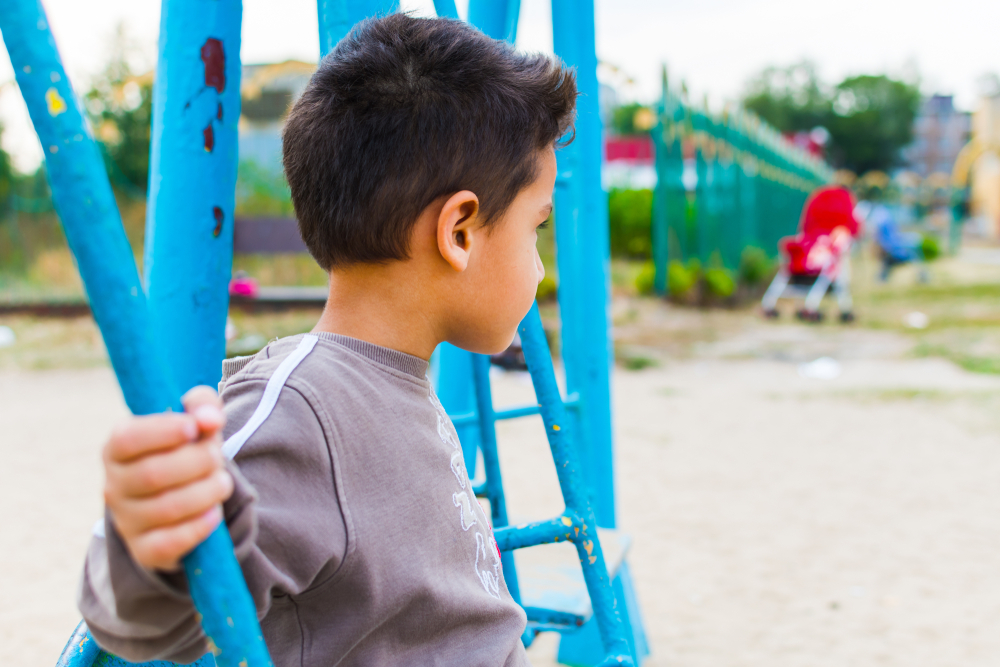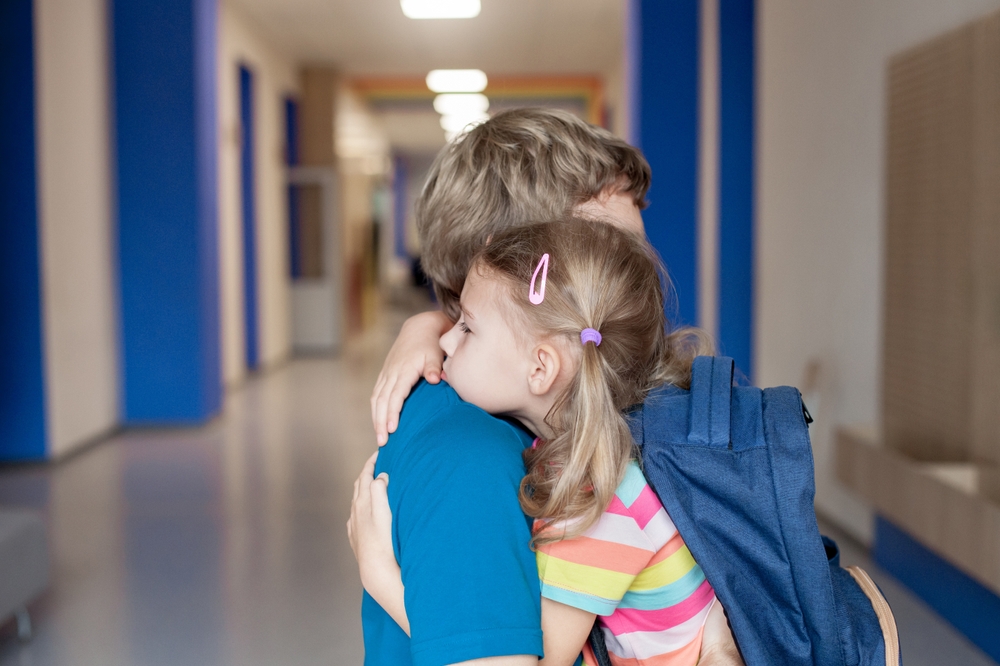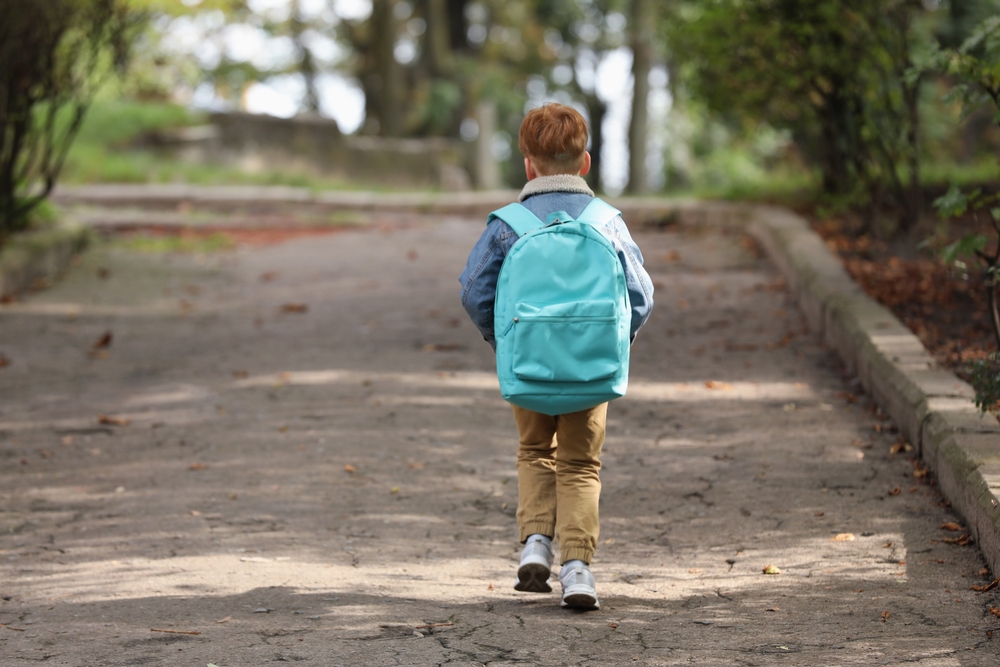Neighborhood kids assure a crying mom they will keep an eye on her little boy during his 1st day of school

The first day of school is supposed to be a milestone, but for many parents, it’s also a quiet heartbreak. You stand there, watching your child step into a world that’s suddenly bigger than your arms can reach, and you wonder—will they be safe? Will they be understood? Will someone notice if they’re scared? For one mom, those questions were written across her tearful face as she stood on the curb, watching her little boy take his first steps into the unknown.
Then, in a moment as unexpected as it was moving, a group of older neighborhood kids walked up—not to tease, not to pass by, but to promise they’d look out for him. A few words, a touch on the shoulder, and the day transformed. It was a reminder that sometimes the most powerful safety nets aren’t built by systems or rules—they’re woven in the everyday acts of people who choose to care.
The Moment on the Curb
You know that knot-in-the-stomach feeling on the first day of school—the one that makes even the strongest parent blink back tears. In a TikTok clip posted by @65lady, a mom stands on the curb, crying quietly as her little boy faces a world that suddenly looks bigger than both of them. It’s a scene many of us recognize: the backpack too bright, the morning air too loud, the goodbye heavier than expected.
Then the unexpected: a small crew of older neighborhood kids steps forward. They tell the mom they’ll be his “bodyguards,” turning an ordinary sidewalk into a circle of safety. One of them says, “El que lo toque lo agarro”—roughly, “Whoever touches him, we’ll get them.” It’s not about toughness; it’s about responsibility. In a few words, they shift the story from fear to protection.
You can see the mom exhale. She hugs the boys—gratitude, relief, and a little awe passing between them. In that embrace, the neighborhood becomes more than an address. It becomes a promise: We look out for one another, even when the bell rings and the adults have to let go.
The internet felt that promise too. The video crossed 6 million views, with people cheering the boys’ upbringing and laughing that the little guy might be speaking Spanish by lunchtime. Not staged. Not polished. Just kids choosing to be protectors instead of bystanders—and reminding the rest of us what community looks like when it shows up.

Why Moments Like This Matter
In a world where headlines often dwell on division and distrust, small acts of kindness like this can feel like a lifeline. Researchers in social psychology call them “prosocial behaviors”—actions intended to benefit others. Studies from the University of California, Berkeley, for instance, have shown that witnessing prosocial acts can create a “moral elevation” in observers, inspiring them to act with more empathy and generosity themselves. This is why one short clip on TikTok resonated far beyond its neighborhood. It wasn’t just a mom feeling supported—it was millions of viewers reminded that compassion is still alive, and it can be contagious.
For the children in the video, this was likely instinct, not strategy. But those instincts are often shaped by the example set at home, in classrooms, and in community spaces. Sociologists point out that children who experience kindness are far more likely to replicate it. In that sense, the boys in this video weren’t only protecting a younger child—they were demonstrating the cultural values their families and community have instilled in them.
And for the mom, this gesture wasn’t simply reassurance about one day at school. It was a visible reminder that her child’s world is bigger than she can control—but also richer than she might have feared. That’s a gift no school supply list could have prepared her for.

The Science of Feeling Safe
Feeling safe isn’t just a nice sentiment—it’s a foundational human need. According to psychologist Abraham Maslow’s hierarchy of needs, safety comes right after our most basic survival requirements like food and water. For children, a sense of safety in new environments—like starting school—is essential to their ability to learn, connect, and thrive. The presence of older, trusted peers can help fill that gap when parents aren’t there.
Research from the Journal of School Health shows that students who feel protected and supported by peers are less likely to experience anxiety and more likely to engage positively with their environment. This aligns with decades of data on “peer mentoring,” which highlights the role older students can play in smoothing the transition for younger ones. What the boys in this video offered was, in essence, informal peer mentorship: a simple promise that allowed a younger child to step into a new chapter with courage.
And safety isn’t only physical—it’s emotional. The mom’s body language shifted the moment she heard their words. Her tearful worry softened into a smile and a hug. That shift is powerful: when parents feel reassured, children often mirror that calmness, creating a ripple effect that can change the tone of an entire day.
The Role of Community in Raising a Child
The phrase “It takes a village to raise a child” has been repeated so often it risks sounding cliché, but moments like this remind us it’s a living truth. Communities are not built solely on shared geography—they’re built on shared responsibility. In healthy communities, children are not just the responsibility of their immediate family, but of everyone who interacts with them. This doesn’t mean overstepping boundaries—it means caring enough to notice, to step in, and to encourage.
Anthropologists have long noted that in many traditional societies, communal caregiving was the norm, with extended family and neighbors playing active roles in child-rearing. Modern urban life often dilutes these connections, but digital sharing of moments like this can reawaken that collective instinct. Seeing kids watch out for one another offers a template for what community can look like in any neighborhood, school, or playground.
It’s easy to underestimate the impact such acts have on a child’s worldview. When children see that multiple adults and peers care for their well-being, they internalize the idea that they matter—not just to their family, but to the wider world. That sense of belonging can influence their confidence, empathy, and resilience for years to come.
A Call to Protect and Connect
We often talk about “changing the world” as if it’s something that happens far away, through massive policies or grand speeches. But change often starts in moments small enough to fit on a sidewalk—the kind where someone sees a need and steps in without waiting to be asked. Those older kids may never realize how deeply they impacted that mother, or how many strangers felt inspired watching them. But they modeled a truth worth remembering: courage isn’t always about standing up to danger—it can be about standing beside someone when they’re vulnerable.
So here’s the challenge: be the “bodyguard” in your own sphere. You don’t have to wear a badge or a uniform. Just be the person who notices, who reassures, who offers a hand on the days someone else is facing their “first day” in an unfamiliar world. Because those moments echo. They travel from one person to another, sometimes through six million screens, sometimes just across the street.
The boy in the video will likely remember that morning for the rest of his life—not just for the nerves, but for the promise that he wouldn’t face them alone. And maybe that’s the bigger message here: in a world that can feel isolating, the smallest act of looking out for each other is also the greatest act of resistance against fear.
Loading...

